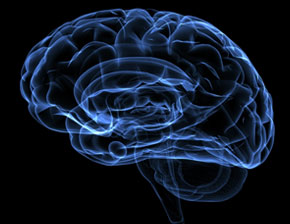Our brain and spinal column are the control center of our body. If these become damaged or altered, it can affect us in a variety of ways. With modern technology, our understanding of these effects is never-ending...
Degenerative Neurological Diseases
Degenerative neurological diseases are those that lead to nerve damage that gets worse as the disease progresses. Ultimately, the person suffering from such diseases dies due to one of the symptoms produced by them. The cause of degenerative neurological diseases could vary from genetics to tumors or stroke or even alcoholism. Chemicals, viruses and toxic exposure could also be other causes that could lead to such diseases.
Some of the common examples of degenerative neurological diseases include the following:
Friedreich’s Ataxia:
This is an inherited degenerative neurological disease that damages the spinal cord along with the nerves that are responsible for arm and leg muscle movement. The most common symptom of this disease is coordination problem which starts to appear between the age of 5 and 15 in most of the cases. However, the more specific symptoms are as follows:
- Muscle weakness
- Scoliosis
- Walking difficulties
- Speech problems
- Involuntary blinking of the eye and eyeball movements
- Heart palpitations
Those people who are afflicted with this condition need become handicapped after around 15-20 years from the first appearance of symptoms. No cure is known yet though intervention includes physical therapy, surgery, braces and medication.
ALS or Amyotrophic Lateral Sclerosis is a degenerative neurological disease in which the degeneration of neurons of the spinal cord and brain occurs. A person suffering from this condition slowly loses the control over his voluntary actions as the disease progresses till he finally loses all moving capability and eventually dies due to respiratory failure. The condition normally hits people in the age between 40 and 60. There is no exact cause known to be responsible for ALS and no cure known either. Intervention includes medication and therapy which can prolong the symptoms but cannot avoid death.
Parkinson’s disease:
This is one of the most common examples of degenerative neurological diseases. In this condition, dopamine production, which is needed for signal transduction to control movement, is absent. The cause is yet unknown. The common symptoms produced by the Parkinson’s disease include:
- Slow movement
- Trembling of jaws, face, hands, legs and arms
- Loss of coordination and balance
- Stiffness of legs, trunk and arms
- Sleep problems and depression
- Chewing and swallowing problems
The onset of the disease in generally after 60 years. No cure is known yet and intervention includes medication and therapy to reduce the severity of symptoms.
Alzheimer’s disease:
This is the most common of all the degenerative neurological diseases. It can change the personality of a person and impair his ability to carry out his everyday activities. The common symptoms include:
- Cognitive impairment
- Memory loss
- Speech problems and trouble in reading, writing and understanding language
Alzheimer’s disease generally sets in after the age of 60 years and it progresses with time till it becomes more aggressive. There is no treatment known to cure the disease though drugs can be used to reduce symptom severity.
Other Degenerative Neurological Diseases:
- Huntington’s Disease
- Spinal Muscular Atrophy
- Lewy Body Disease

- Home
- Acupuncture Therapy For Neurological Diseases
- Chronic Neurological Diseases
- Common Neurological Diseases
- Degenerative Neurological Diseases
- Equine Neurological Diseases
- Fatal Neurological Diseases
- Genetic Neurological Diseases
- Hereditary Neurological Diseases
- List Of Neurological Diseases
- Most Common Neurological Diseases
- Neuro-Infectious Diseases
- Neurological Autoimmune Diseases
- Neurological Degenerative Diseases
- Neurological Diseases In Children
- Neurological Diseases In Dogs
- Neurological Diseases In Horses
- Neurological Disorders Brain Diseases
- Neurological Genetic Diseases
- Neurological Symptoms
- Neurological System Disorders
- Pediatric Neurological Diseases
- Rare Neurological Diseases
- Symptoms Of Neurological Diseases
- Treatment Of Neurological Diseases
- Types Of Neurological Diseases
